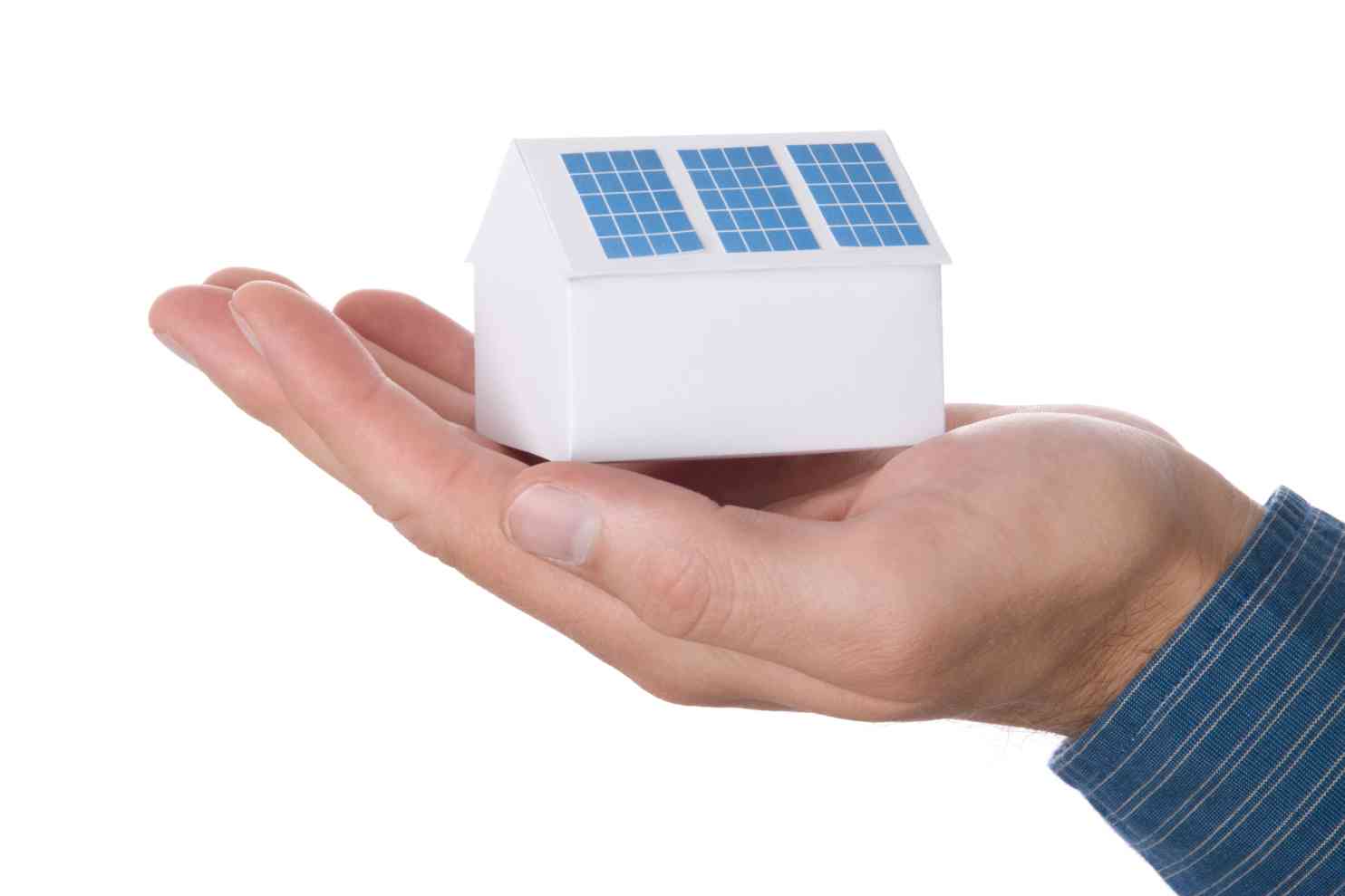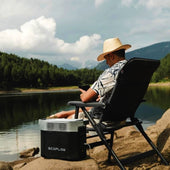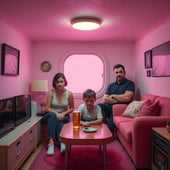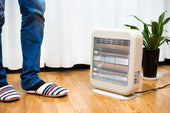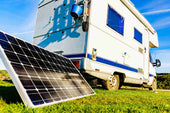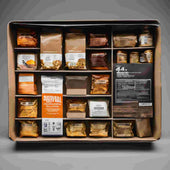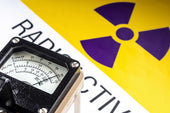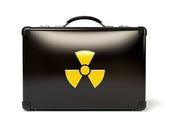Solar Energy System: Install Solar Panels At Home

Solar power has gained popularity among house owners.
Electricity will likely continue increasing daily because customers want to reduce their monthly statements.
Consumers are also becoming more aware of their need for green power.
Most families want to reduce their use of conventional energy sources for environmental reasons, in case of a power outage, or simply because they want more control over their energy consumption.
It is more than a cost-cutting measure; it is independence. Imagine not worrying every time there is a blackout or some sudden price increase on electricity.
Solar energy can give you control over your home's power and, in the right setup, take it off the grid.
A reliable solar system is essential if you live in an area with frequent storms or unreliable electricity.
That is where EcoFlow comes in. Unlike complex solar installations requiring months of planning and professional installation, EcoFlow offers portable and whole-home solar solutions that are easy to use and highly efficient.
EcoFlow makes the transition easier whether one wants backup power for emergencies or a full solar setup for daily use.
Their high-quality solar generators and smart battery systems enable homeowners to start tapping into solar energy without the hassle normally associated with it.
The shift to solar power is no longer a knack for the tech expert or the environmental enthusiast; it is for the rest of us and never easier than with EcoFlow.
Understanding How Solar Power Works
Solar power is considered one of the most powerful household sources. Have you ever wondered how solar energy works? It's pretty straightforward.
The basis of any solar energy system is supposed to absorb sun radiation and transform the absorbed sunlight into electricity.
When sunbeams reach solar panels, direct power has already been developed within them, causing the current to turn to DC, which is Direct Current.
Many of our house appliances take and utilize electricity at alternating currents in houses, and due to such, the function inverter plays a significant role in converting these currents directly created to alternatives so they become utilizable.
Solar systems can also contain storage or a bank of batteries to store excess power for release at night and on cloudy days.
Charge controllers aid in controlling how much power runs through the panel to prevent charging batteries too many times and overcharging them for their lifespan.
There are also two types: grid-tie and off-the-grid.
An off-the-grid solar system continuously remains connected to the utility, so you always have the freedom to use its power if necessary.
In addition, the extra generation that goes into the grid is fed back into the grid in many places and often reduces your utility bill.
An off-grid system is independent and requires enough solar panels and battery storage to power a house entirely on solar panels.
There are many reasons to install solar panel systems. Some people want to save money on electricity bills, while others appreciate energy independence and clean alternatives.
While the upfront cost of a battery or solar panels can be prohibitive, financial incentives include tax credits and power purchase agreements (PPAs).
Even though you only lower maintenance and energy costs after installing the solar panels, you will still invest in a renewable source that reduces your dependence on fossil fuels.
Good planning usually lets a solar power system within your home generate sufficient electricity to supply much or all of the daily needs for your home.
Can Solar Power an Entire House?

Indeed, homeowners often pose such a question.
Can one produce all electricity needed in their home by merely relying on the power of the sun?
Factors would include consumption in terms of energy usage, the extent of sun a home gets on any given day, and the number of solar panels required to gain adequate production.
Find out how many kilowatt-hours of electricity your home uses.
Check your electric meter or review old utility bills to get your home's usage in kWh for a month or a day. The average U.S. home uses about 30 kWh/day.
Then, calculate the number of panels needed to provide enough electricity. This depends on the amount of power each panel produces.
On average, one panel generates 300 to 400 watts of power. If your house requires 30 kWh a day and the panels produce 400 watts, you might require about 25 to 30 panels to completely go off the grid.
The problem, however, is space. Not all houses have ample space to support solar panel systems big enough to power a home entirely.
At this point, though, people can still enjoy substantial savings in their electricity bills by installing smaller solar energy systems that offset energy consumption costs.
A solar-powered house may also require storage batteries to store excess energy for nighttime use.
While batteries add a cost to the solar installation, they offer security in case of grid failures.
For homes that remain connected to the local utility, net metering allows them to sell back excess power, further reducing costs.
Real-life case studies show that fully solar-powered houses are indeed possible.
In states like California, Arizona, and Texas, which offer a large amount of sunlight every season, many homeowners can install solar panels on their houses with complete reliance on home solar systems.
Others use solar power to reduce their utility bills with a grid connection for backup.
Today, this sector's financial incentives, tax credits, and tax breaks have made solar electricity cheaper than ever.
A solar company can determine whether one is looking to buy solar panels to provide complete solar power for his or her entire house or just to save energy from the costs, given one's requirements.
Solar power allows homeowners to save money, gain energy independence, and contribute to a cleaner future.
Calculating Your Home's Solar Needs
Estimating the power required before installation would be an interesting first step in building a solar-powered home.
That will give you a baseline for determining exactly how many panels you'll have to install, how large a battery bank is required, and, most importantly, whether you need to connect to the utility company or can go fully off the grid.
Determining Your Energy Usage
The amount of electricity consumed during a month is supposed to be checked by checking the electric meter or previous bills.
In the United States, an average house consumes approximately 900 to 1,200 kilowatt hours every month; however, this depends upon the place or location due to climate, house size, and appliances running during the day.
Divide your monthly usage by 30 to get a closer estimate of your home's daily energy use. For example, if your home consumes 1,000 kWh per month, that will be approximately 33 kWh daily.
How Many Solar Panels Are Needed?
You see, knowing this, you now know how much energy you need using solar power.
Then, compute how many would need to be installed within the house to provide enough power for a perfect solar panel with enough capacity to create between 300 and 400 watts per hour.
For instance, if your house requires 33 kWh per day and opt for the 400-watt panels, then you would need about 28 to 30 solar panels to fully power your house.
However, consider the following:
-
Your roof space must accommodate sufficient solar panels to produce solar electricity for your house.
-
The location and how much sunlight hits your home will affect panel efficiency.
-
If you live in a cloudy area, you may require more solar panels or a bigger battery bank for storage.
Battery Storage for Nighttime and Cloudy Days
Since solar panels only work when the sun's energy is available, a storage battery is crucial for homes wanting to rely on home solar power 24/7.
A battery bank stores excess energy generated during the day for use at night or during bad weather.
EcoFlow offers impressive backup power solar generators for homeowners keen on easy installation without complications.
Their portable and whole-house solar power systems are easy to use, allowing you to store and access your collected solar electricity whenever possible.
Whether you're going off the grid or developing a reliable solar installation for an emergency, EcoFlow has cost-efficient, high-quality solutions for everyone.
The Costs and Savings of Solar Power
Most people hold themselves back from installing solar panels mostly because of the cost of the upfront solar panel, but, as a fact, installing solar is one of the smartest financial decisions you can make.
Proper solar energy system setup can save you money for decades while reducing dependency on fossil fuels.
Initial Investment Breakdown
When you purchase solar panels and set up a residential solar system, your major costs will be:
-
Solar panels—Depending on their efficiency, an average-sized solar power system will cost between $15,000 and $30,000.
-
Inverter – Converts DC power from panels into alternating current (AC power) for home use.
-
Storage batteries – If you want a solar-powered house that can function at night or off-grid, you will need batteries, which can add $5,000–$15,000 to the cost.
-
Solar installation – The cost of a professional installation varies between $2,000 and $5,000, depending on the complexity of your system.
The high upfront cost notwithstanding, financial incentives exist to make solar power more affordable.
How Much Money Can You Save?
A well-thought-out system of home solar power significantly brings down utility costs.
Where power is generated mostly by the panels, a household can save between $1,000 and $2,000 annually on electric bills.
Even more, via net metering, any electricity produced by your solar system that is more than what it consumes can be sold to a local utility in addition to other energy bill savings.
The payback on investment for a solar power system is 6 to 10 years.
This means that your system will generate almost free electricity after that period. It will also work efficiently for 25 to 30 years, resulting in decades of savings.
Government Incentives, Tax Credits, and Rebates
There are several financial incentives to make solar installation more affordable:
-
Federal Tax Credits – The U.S. government provides a 30% tax credit on the total cost of your solar energy system.
-
State and Local Rebates – Many states offer additional rebates, cutting the costs of solar panels.
-
Power Purchase Agreements (PPA)—Some homeowners opt for a PPA, in which a solar company installs the system at no upfront cost, and you pay for the energy it produces.
These incentives help save money for homeowners and make home solar accessible to a broader audience.
EcoFlow Cost-Effective Solar Solutions
EcoFlow's solar generators are an affordable way to begin for those who want a solar-powered house but are unsure about committing to a full residential solar system.
While traditional solar panel systems require significant renovations, EcoFlow's portable and whole-home solar solutions are flexible ways to enjoy solar power without a huge upfront cost.
EcoFlow's products are perfect for:
-
Backup power during blackouts.
-
Off-grid living or remote areas with unreliable grid connections.
-
Homeowners who want to connect solar panels gradually instead of making a big investment all at once.
Given this, EcoFlow's solar energy systems can generate efficient electricity and store it for later use. This will help householders save cash, reduce energy expenses, become energy-dependable, and not break the bank.
Installation Process: DIY vs. Professional

However, after choosing solar panels for yourself, you may wonder whether you should choose or hire a solar company.
Both options have pros and cons, but their choice depends on your budget, skill level, and energy needs.
How to Install a Solar System Step-by-Step
-
Assess Your Energy Needs – Calculate your daily electricity usage to know how many solar panels you need.
-
Choose a Solar System: You can choose between a grid connection, an off-grid setup, or a hybrid solar power system.
-
Check Roof Space & Positioning: Ensure your roof receives enough sunlight and has enough space for solar panels to be installed efficiently.
-
Purchase Equipment – Get solar panels, an inverter, storage batteries, and a mounting system.
-
Install Mounting & Panels – Secure the mounts, then properly attach and connect solar panels.
-
Wire the System – Mount the inverter and connect it to your electrical panel.
-
Test & Activate – Confirm that the system is safely wired and start generating solar electricity.
DIY vs. Professional Installation
DIY Installation
✔ Saves on solar installation costs
✔ Suitable for small or portable solar panel systems
✖ Needs electrical knowledge and safety precautions
✖ Can void manufacturer warranty
Hiring a Professional
✔ Provides a safe and efficient home solar power setup
✔ Assists with permits, grid approvals, and tax credits
✖ The higher installation cost upfront
How EcoFlow Makes Installation Easy
EcoFlow plug-and-play solar generators suit consumers seeking an easy, flexible, and hassle-free way to obtain solar power without complicated installations.
Their solar power systems do not necessitate technical expertise: connect the solar panels and get going.
Maintenance and Longevity of a Solar System
A solar power system is a lifelong investment, for which the payoff remains clean energy for decades after proper care.
Fortunately, solar panels don't require much maintenance; however, a few simple steps can be taken to keep them running efficiently.
How Long Do Solar Panels and Batteries Last?
-
Solar panels last 25 to 30 years, though they may lose about 0.5% yearly efficiency.
-
Storage batteries, which store excess solar electricity, last 10 to 15 years, depending upon usage and maintenance.
Easy Maintenance Tips for Peak Efficiency
-
Keep solar panels clean – Dust, leaves, and dirt can block sunlight and reduce efficiency. A gentle rinse with water every few months helps.
-
Check system performance – Use a solar energy system app or check your electric meter to ensure your system is generating enough power.
-
Inspect wiring and connections – Loose or corroded wires can affect power output. A quick check every few months can prevent bigger issues.
Warranty and Servicing
Most solar panels installed come with 20 to 25 years warranties, while battery storage and inverters are covered for 5 to 10 years.
A reliable company ensures that long-term support is always available in the solar industry, saving you money and maximizing your investment in renewable energy.
Conclusion: The Future of Solar Power and Innovations
This is more than a way to save money; it's about investing in clean energy, energy independence, and the future.
Knowing how much power your home needs, choosing the right solar panels, and taking advantage of financial incentives allow homeowners to make the best decision about installing solar panels.
Even though the initial solar panels' cost seems very high, the long-run savings on electricity bills, added to tax credits and net metering, make home solar power a smart financial choice.
When properly maintained, solar panel systems can last up to 25–30 years, providing sufficient electricity to minimize reliance on fossil fuels and traditional utility companies.
For those not ready to take the plunge into a full home solar system, EcoFlow offers easy, flexible alternatives through their solar generators.
Whether you need to power a house, live off-grid, or provide backup power, EcoFlow's plug-and-play solutions make it simple to start using renewable energy today.
Now's the time to begin exploring solar power systems for your home.
Whether choosing a fully implemented solar energy system or a solar generator system, switching over results in reduced energy costs and a greater ability to control energy usage, which is the next step toward a greener future.

